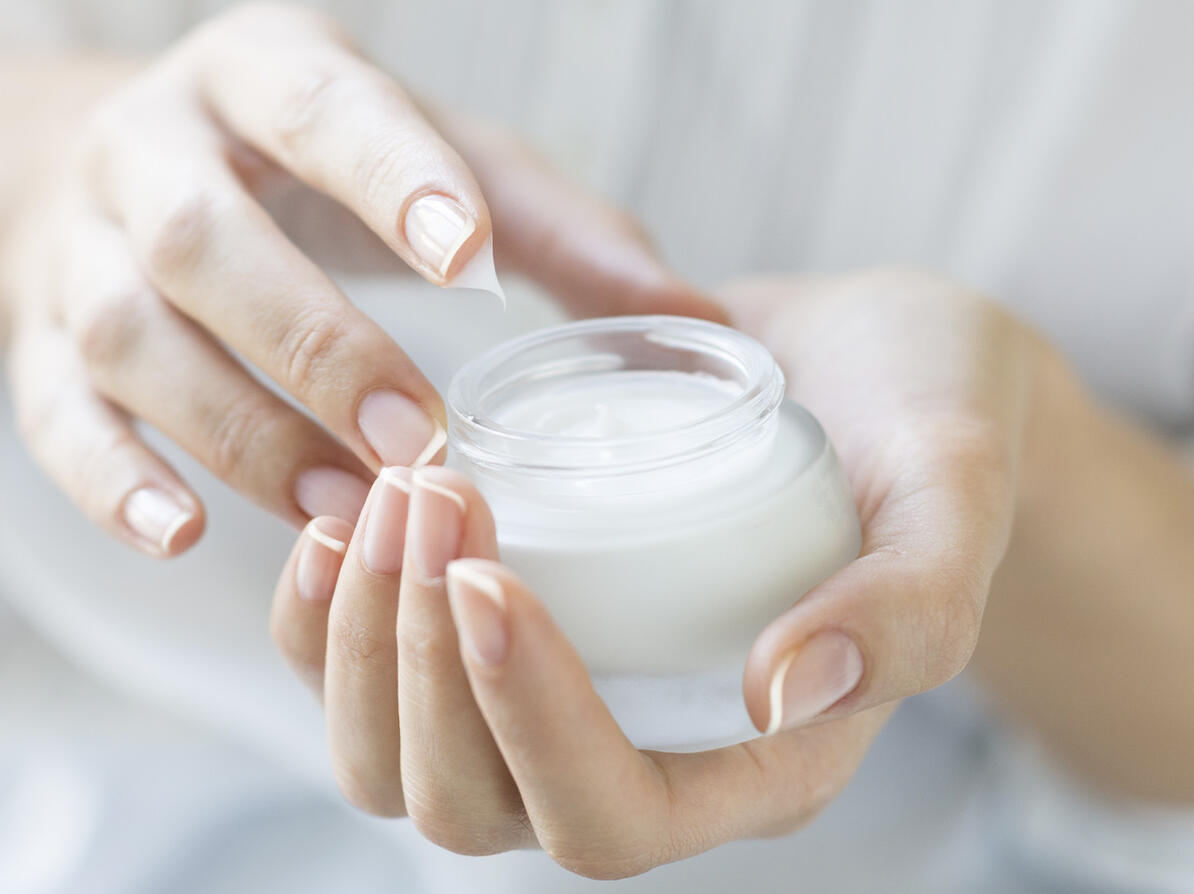These facial creams contain unwanted chemicals
If you are looking for a new facial cream to moisturize and nurture your skin, there are a few chemicals you may want to avoid.

The Danish Consumer Council THINK Chemicals looked at the ingredient lists of 62 facial creams purchased in physical stores or on webshops. 12 of these products contain chemicals which are problematic for human health or the environment.
They receive the lowest rating, C-rating.
Chemicals in creams are not harmful on their own
A facial crème with problematic chemicals is not in it self harmful, and the chemicals we found are legal to use.
But your skin is exposed to the chemicals all day, and this is in combination with other chemical exposures from foods, clothes, electronics and health care products.
But scientists and authorities are concerned that the cocktail or mixture effect of unwanted chemicals in everyday life may impact public health.
Therefore, it is a good idea to avoid unwanted chemicals whenever possible. Personal care products such as facial creams may be a good place to start when looking for alternatives without these chemicals.
A total of 35 products in the test are considered a good choice – without a range of unwanted chemicals.
Suspected endocrine disruptors added for scent or preservation
Facial creams may contain substances which are suspected endocrine disruptors. This means, that they can contribute to disturbing of the natural hormonal balance.
Some of the unwanted effects related to the overall exposure of endocrine disrupting substances are malformed genitals in newborns and reduced fertility, among others.
The reasons for using these chemicals in facial creams vary but generally they are added for their desired properties. This could be to create a certain scent, texture or for preservation purposes.
Alternatives exist so the use is not necessary.
PFAS found in a few facial creams
The persistent chemicals PFAS were present in two facial creams. PFAS are considered harmful to the environment and to human health.
The number of facial creams containing PFAS has decreased. In our previous test from 2021, eight out of 62 facial creams contained PFAS. In the new test PFAS was found in two products.
It can be difficult to identify whether your facial cream contains PFAS or not, since many of them go by different - and usually very long and complicated names.
In our test, we found the specific PFAS: Polyperfluoromethylisopropyl ether or Tetradecyl aminobutyroylvalylaminobutyric urea trifluoroacetate.
Silxoxanes are being phased out
A similar trend is seen in relation to siloxanes, which is another group of unwanted chemicals.
In our former test from 2021, siloxanes were present in eight out of 62 creams, while it is only present in two out of 62 in the new test.
In this case, we find the chemicals cyclopentasiloxane and cyclohexasiloxane, which are listed as substances of very high concern by the EU, due to their harmful effects on the environment.
Cyclopentasiloxane is also a suspected endocrine disruptor and has been banned in rinse-off products, e.g. shampoo. Earlier this year, a ban on these chemicals in all cosmetic and care products was passed. However, the ban will not come into effect until 2027.
Pregnant women should be aware of Vitamin A
Substances like retinol and retinyl palmitate are forms of Vitamin A that may be in your facial cream. In the test, three face creams contained this Vitamin A.
To some, Vitamin A can relief acne-prone, damaged, or dry skin. However, too much Vitamin A can affect the liver and pose a risk to the unborn child, as well as increasing the risk of birth defects.
Therefore, it is a good idea to be cautious about not getting too much Vitamin A, especially when you are pregnant or breastfeeding.
The Consumer Council THINK Chemicals do not assess Vitamin A in the test.
These 12 facial creams contained unwanted chemicals
In our test these 12 facial creams receive the lowest rating, C-rating. They contain substances which are problematic either for human health or the environment.
The products are:
- Bioderma, Hydrabio gel-crème
- Biotherm Homme, Aquapower advanced gel PNM
- Clinique, Moisture surge C-kolbe00H auto-replenishing hydrator
- Clinique for men, Moisturizing lotion
- Elizabeth Arden, Visible difference refining moisture cream complex
- Garnier, Vitamin c glow boost day cream
- ISNtree, Hyaluronic acid moist cream
- Kiehl’s, Ultra facial cream
- Kiehl’s, Facial fuel moisture treatment for men
- Origins, Ginzing ultra-hydrating energy-boosting cream
- Pestle & Mortar, Hydrate leightweight moisturiser
- Tromborg, Deluxe face cream day & night
About the test
-
ACO, Apotekets, Avène, Avivir, Beauté Pacifique, Beauty of Joseon, Bioderma, Biotherm, Bulldog, Byoma, CeraVe, Cien, Clarins, Clinique, Cosrx, Decubal, Derma, Dermalogica, Dr. Hauschka, Dr. Jart, Drunk Elephant, Ecooking, Elizabeth Arden, Embryolisse, Garnier, Grøn Balance, Hello Sensitive, I-Cos, ISNtree, Ivy Aïa, Kiehl’s, La Roche-Posay, L'Oreal, Matas, Miild, Neutral, Nilens Jord, Nivea, Ole Henriksen, Origins, Pestle & Mortar, Pudderdåserne.dk, Pure & Care, Raunsborg, Rema 1000, Rudolph Care, Salling, Sanzi Beauty, Seriøst bedre hud, The Inkey List, The Ordinary, Tromborg, Vichy, Weleda, Woods_ Copenhagen, Änglamark ans 365 Minirisk.
-
Suspected endocrine disruptors:
- Cyclopentasiloxane
- Benzyl salicylate
- Methylparaben
- Salicylic acid
- BHT
- Benzophenone-4
PFAS
- Polyperfluoromethylisopropyl ether
- Tetradecyl aminobutyroylvalylaminobutyric urea trifluoroacetate